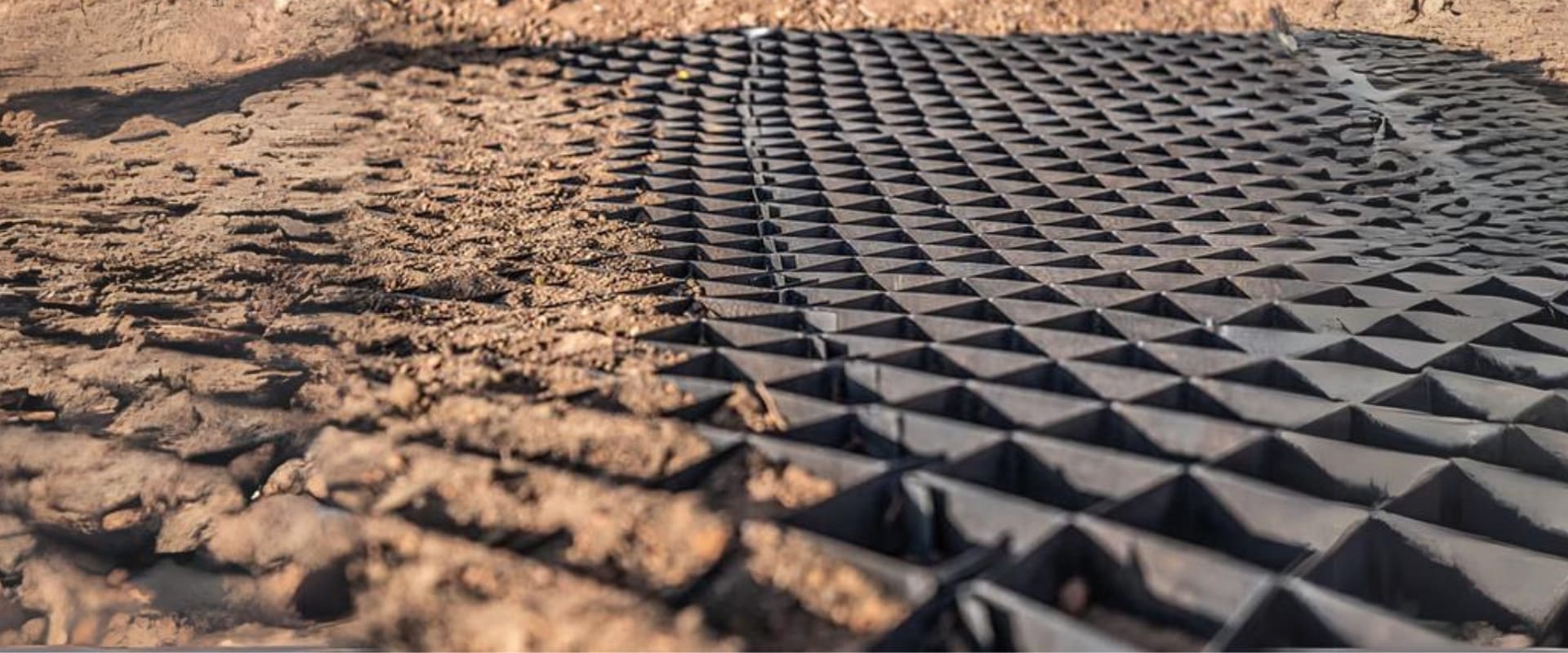Abstract
Geogrids, geosynthetic materials with high-strength polymers, reinforce weak soils in civil engineering. Versatile and durable, they enhance tensile strength, preventing erosion and settlement. Used in retaining walls and roadways, geogrids offer a cost-effective solution for stability in diverse projects.
Blog
A geogrid is a type of geosynthetic material specifically designed and employed to enhance the mechanical properties of soils and other similar materials. The primary purpose of geogrids is to reinforce by improving the tensile strength and load-bearing capacity of the soil, especially in situations where the native soil may be weak or prone to deformation.
Here are some key points elaborating on the characteristics and uses of geogrids:
Reinforcement Function
- Geogrids are utilized to reinforce soils that are inherently weak or prone to settling under loads.
- The primary mode of reinforcement is through the tensile strength of the geogrid, which helps to distribute loads and restrain soil movement.
Tensile Strength
- Unlike natural soils that are typically weak in tension and may disintegrate under applied forces, geogrids exhibit high tensile strength.
- Tensile strength is the ability of a material to withstand stretching or pulling forces without breaking.
Polymeric Materials
- Geogrids are commonly manufactured from various polymer materials, such as polyester, polyvinyl alcohol (PVA), polyethylene, or polypropylene.
- The choice of polymer depends on factors such as durability, chemical resistance, and the intended application.
Construction
- Geogrids can be constructed in different forms, including woven or knitted structures made from yarn or heat-welded configurations formed from strips of material.
- The manufacturing process and structure influence the mechanical properties of the geogrid.
Soil Retention
- By reinforcing the soil, geogrids help prevent soil erosion, slippage, and settlement.
- In retaining wall applications, geogrids enable the construction of steeper and more stable slopes.
Durability and Longevity
- Geogrids are designed to be durable and resistant to environmental factors, ensuring long-term stability in various conditions
Ease of Installation
- Geogrids are often relatively easy to install, offering a cost-effective and efficient solution for improving the performance of soil structures
In summary, geogrids play a crucial role in geotechnical engineering by reinforcing soils and enhancing their strength and stability. Their use contributes to the longevity and effectiveness of various civil engineering projects.



